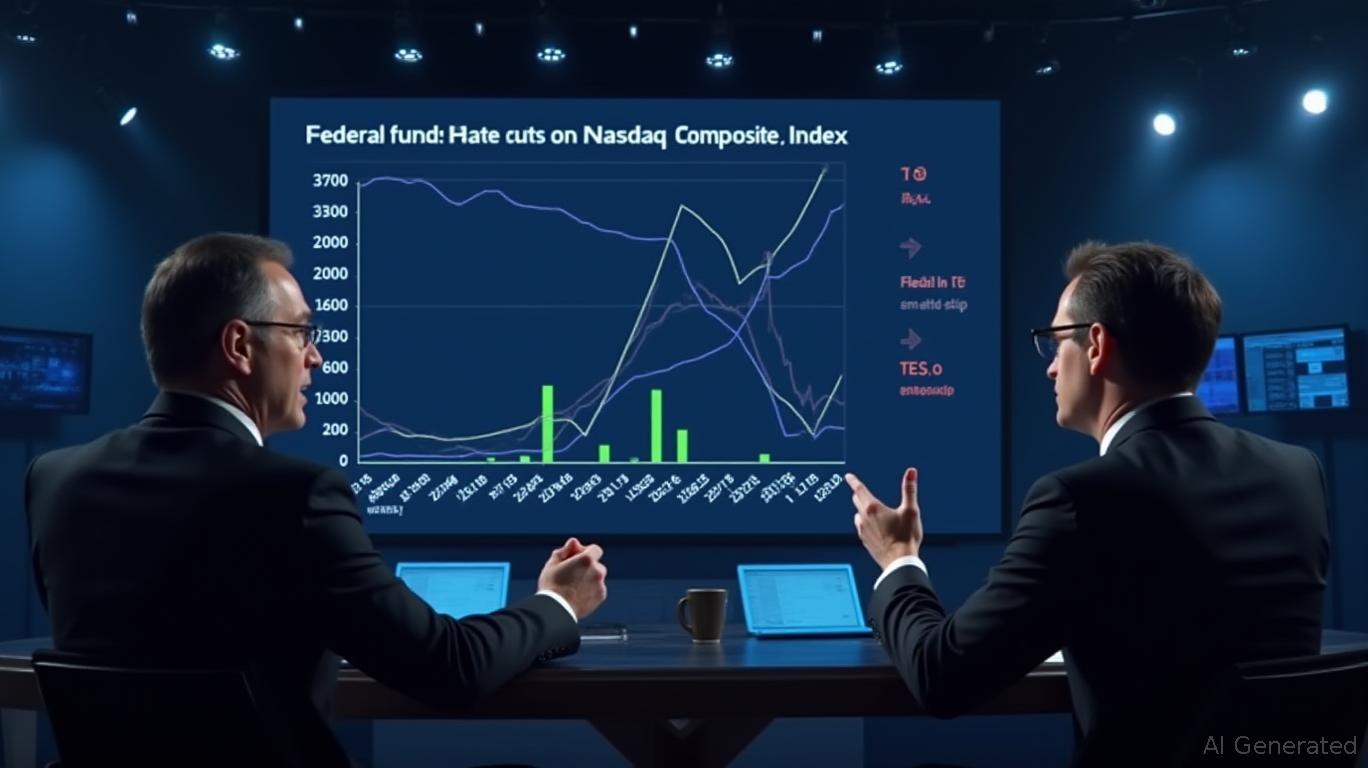The Fed's Pivot: How Dovish Signals Could Ignite a Market Rebound
The Federal Reserve's recent pivot toward a more cautious monetary policy stance has sent ripples through U.S. equity markets, with rate-sensitive sectors like technology, real estate, and consumer discretionary poised to benefit from the potential easing of financial conditions. At the heart of this shift are the final remarks of Philadelphia Fed President Patrick Harker, whose emphasis on data-dependent decision-making and lingering uncertainties about inflation has underscored the likelihood of a prolonged pause in rate hikes. For investors, this presents a critical moment to reassess sector allocations—and seize opportunities in areas that have been beaten down by years of aggressive Fed tightening.

The Fed's Message: Caution, Data, and Room for Rate Cuts
Harker's June 2025 speech before retiring as Philadelphia Fed president crystallized the central bank's current mindset. While reaffirming the Fed's commitment to its 2% inflation target, he stressed that disinflation has been slower than hoped, with consumer sentiment and wage growth still volatile. Crucially, he acknowledged that the FOMC's decision to keep rates steady was not a permanent hold but a “deliberate pause” to evaluate incoming data. This dovish undertone—paired with his acknowledgment of regional labor market challenges and the risks of fiscal policy uncertainty—suggests the door remains open to gradual rate cuts if inflation continues to moderate.
The implications are clear: With the Fed's hawkish stance softening, sectors that thrived during the zero-interest-rate era but suffered under the 2022–2024 rate hikes could see valuations rebound. For instance, reveals a strong inverse correlation, with tech stocks often rallying when rates stabilize or decline. Similarly, real estate investment trusts (REITs) and consumer discretionary companies—both highly sensitive to borrowing costs—could regain momentum as the cost of capital eases.
Sector-Specific Implications
Technology:
The tech sector, which has been among the hardest-hit by rising rates, is now in a position to recover. Lower discount rates for future cash flows could reinvigorate valuations for growth stocks, particularly in cloud computing, AI, and semiconductors. Harker's emphasis on “job quality” also hints at a Fed willing to tolerate moderate wage growth, which could support tech firms' hiring and innovation cycles. shows how tech underperformed as yields rose; a reversal could be near.
Real Estate:
The real estate sector, which has been crushed by mortgage rate spikes, stands to benefit most directly from a Fed pause. Lower rates would ease refinancing pressures on homeowners and reduce the cost of capital for developers. Harker's focus on regional economic challenges—such as Philadelphia's reliance on education and healthcare—also suggests that the Fed is attuned to geographic disparities, potentially supporting targeted REIT plays in resilient markets. highlights the sector's sensitivity to bond yields.
Consumer Discretionary:
Consumer discretionary stocks, which rely on spending confidence, could see a dual boost: lower rates would free up disposable income, while a stable labor market (despite Harker's regional concerns) would support retail and travel. Harker's mention of “household financial stress” underscores the need for Fed policies that sustain consumer balance sheets. illustrates how this sector historically thrives when unemployment is low and stable.
Risks and Opportunities in Action
While the Fed's pivot is bullish for rate-sensitive sectors, investors must remain vigilant. Harker's caution about “tariff-related impacts” and “unclear policy effects” suggests that external shocks—such as trade disputes or fiscal overreach—could still disrupt the rebound. Additionally, the Fed's balance sheet normalization, which Harker described as “gradual but deliberate,” remains a wildcard. A sudden shift in reserve management could tighten liquidity faster than expected.
To navigate this environment, agility is key. Platforms like Moomoo, which offer commission-free trading and low fees, provide a tactical edge for investors looking to rebalance portfolios quickly. For example:
- Tech: Use ETFs like XLK to gain broad exposure while avoiding individual stock risks.
- Real Estate: Target REITs in sectors like industrial or data centers, which benefit from secular growth.
- Consumer Discretionary: Focus on companies with pricing power, such as luxury brands or subscription-based services.
Conclusion: A New Chapter for Rate-Sensitive Plays
The Fed's dovish signals, amplified by Harker's final remarks, are a green light for investors to revisit sectors that have been sidelined by years of tightening. While risks remain, the path toward lower rates—and higher valuations—is now clearer. With tools like Moomoo enabling seamless portfolio adjustments, the time is ripe to position for a rebound. As the Fed pivots, so too should investors—leaning into the sectors that stand to gain most from its newfound patience.
Data visualization to illustrate the potential link between Fed policy and equity valuations.

Comments
No comments yet